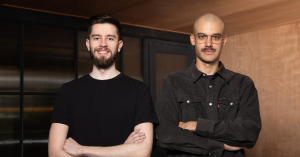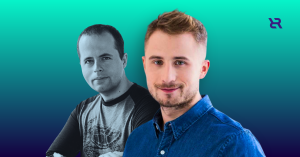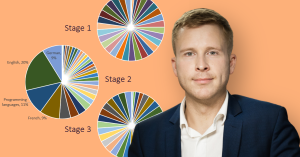We have all heard about the lean startup methodology, but what does lean mean in the general business world? Lean thinking, a concept coined by Dr. James Womack, author of the book “The Machine That Changed the World”, has emerged as a transformative approach to organizational management and growth. During his visit to Sofia for the Tomorrow Redefined conference organized by Lean Institute Bulgaria, Dr. Womack shared his profound insights on lean thinking and its relevance to various aspects of the business world.
The Recursive met with him to explore the significance of lean thinking across various aspects of business, the role of leadership in driving successful lean transformations, common misconceptions about lean, and how emerging technologies can be effectively integrated through lean principles.
“The basic big idea of lean is something that you can hardly disagree with – that we want to think carefully as organizations about what value people want – we need to listen. However, it is hard for big companies in particular to listen. And we want to ask ourselves how we can organize the entire stream of actions required to create value – all the way from the raw material and the concept to the customer – with the least resources,” Dr. Womack explains.
What is lean thinking?
At the core of lean thinking lies the objective of understanding and delivering value to customers while optimizing resources and minimizing waste. Dr. Womack emphasizes the importance of listening to customer needs and organizing the entire value stream, starting from raw materials to the end product, in the most efficient way possible. By embracing lean thinking, organizations can simultaneously enhance customer satisfaction and the respect of their employees.
He outlines that the five fundamental principles of lean – value, value stream, flow, demand, and continuity– will remain relevant even in the rapidly evolving business landscape.
So will the distinction between leadership and management, he adds. While management focuses on daily operations, leaders drive change and constantly strive for improvement. Effective leaders foster a lean mindset throughout the organization by challenging existing expectations, empowering employees, and encouraging a commitment to continuous improvement. By providing a clear vision and supporting the adoption of lean principles, leaders play a vital role in successful lean transformations.
The lean misconceptions debunked
One common misconception Dr. Womack highlights is viewing lean as a one-time program rather than an ongoing process.
“Lean is a progressive process. You never say that an organization is lean, only that it’s leaner. Lean is not a static system but a progressive journey towards continuous improvement. A lot of companies have heard about the lean concept from consultants. And the reason why this is not working is that consultants are teaching organizations that lean is a program, not a process. Instead, I try to teach companies that in order to be lean, they have to change their mindset and their daily practices,” Dr. Womack advises.
To adopt a lean mindset, organizations need to prioritize daily management for basic stability, improvement management, and lean management. Dr. Womack illustrated the power of lean processes through a real-life example. During his visit to a large healthcare organization in the US, he encountered a situation where a patient, an undocumented immigrant with a fatal illness, sought medical assistance.
The doctors quickly diagnosed the situation and recognized that sending the patient back to their home country was the best course of action. Instead of getting entangled in a bureaucratic web of meetings and emails, the organization’s lean management approach empowered the frontline healthcare professionals to address the situation directly with the senior leadership. Within a matter of hours, a decision was made, and the necessary arrangements were made to send the patient home.
This lean process not only saved significant time and administrative efforts but also showcased the importance of empowering employees at all levels to make informed decisions that align with the organization’s values and objectives.
Addressing the integration of AI in the business world
As technology and automation continue to advance at an unprecedented pace, organizations are increasingly exploring the integration of emerging technologies like Chat GPT and generative AI within their operations.
“It’s crucial to consider the consequences and social impact of technological advancements. While AI and Industry 4.0 hold great potential, the manner in which they are implemented must be carefully evaluated,” he says.
Dr. Womack cautioned against adopting new technologies solely for the purpose of eliminating jobs. Instead, he encouraged organizations to identify the problems they aim to solve and bridge the existing gaps.
“One of the big things that is happening in developed countries is that a lot of the work that people used to do has now been eliminated by technology. The problem is that this has happened without a real plan of how people should be upskilled to do something else. The managers who are only concerned about how to make money might think that this is just how the world works. But, well, if this starts to happen way too often, people might start to revolt. Having a plan of how to upskill them is essential,” he explains.
The startup paradox: nailing it vs. scaling it
Rather than hastily embracing new technologies, Dr. Womack advocated for a culture of experimentation and validation. Organizations should conduct small-scale experiments to test the feasibility and effectiveness of AI applications before committing significant resources. By conducting honest assessments of the value proposition and potential benefits for both customers and the company, organizations can make informed decisions regarding the adoption of new technologies.
“What we see right now is that there are a lot of new ideas that have to be validated. If we use a metaphor for the startup world, we can say that generative AI companies have done their MVP so to say, testing the minimum functionality with the end user to test. But then after the concept has been proven and the idea has been nailed, then it comes time to scale it. And it looks like nailing it is a lot easier than scaling it,” he shares.
While many entrepreneurs excel in conceptualizing and nailing innovative ideas, scaling these concepts for long-term success can prove more daunting. Successful implementation of new technologies requires not only technical expertise but also effective management and leadership capabilities.
The social dynamics of new technologies
Dr. Womack emphasized that every technology carries a social dimension alongside its technical aspects. Integrating new technologies within existing social systems often presents unforeseen challenges. The impact of technology on individuals, society, and the workforce must be carefully assessed. Organizations need to consider the social consequences and proactively plan for upskilling or reskilling employees whose roles may be affected by automation or AI.
“Every technology has a social and a technical basis, which integrate into a socio-technical system. And guess what – the technological part is often a lot easier to figure out than the social because the social requires experiments, testing social limits, and creating a common vision. This is why often something that looks technically ready to go, can cause all kinds of other social problems to emerge,” Dr. Womack emphasizes.
Dr. Womack highlighted the importance of regulation in balancing the benefits and potential risks associated with emerging technologies. Thoughtful regulations can help navigate the ethical and societal implications of technological advancements. Furthermore, he stressed the need for organizations and society as a whole to collectively develop a common vision for the integration of new technologies. This shared vision enables a more cohesive and responsible approach to incorporating AI and automation.
“Every new technology is double-edged. We are glad to be living in a time when there is so much innovation. And that’s true but there is also so much new trouble being created,” he concludes.







